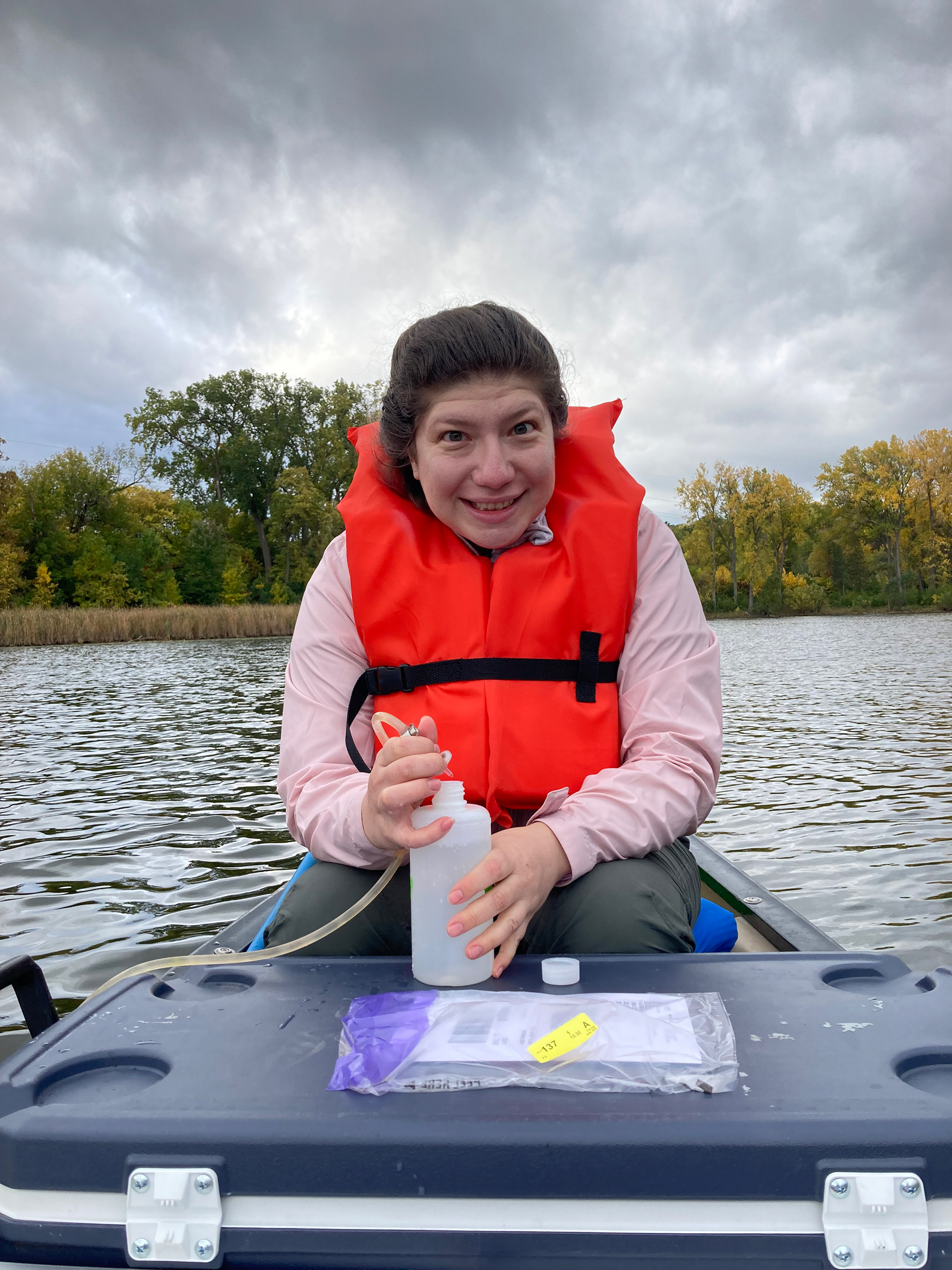OVERVIEW:
I am interested in the biogeochemical cycling of trace metals and macronutrients in aquatic environments. I am interested in the co-evolution of life and the early Earth, especially 1) how paleo-redox proxies are able to constrain the geochemistry of the environments that allowed early life to evolve and diversify, and 2) how microbiological processes have had a role in trace metal biogeochemistry in ancient and modern environments. I am also curious about temporal and spatial trends in biogeochemical cycling in modern systems, such as how climate change has influenced trace metal burial in Great Lakes sediments. As a result of these research interests, my work is interdisciplinary, spanning geochemistry, environmental sciences, limnology, and microbiology.

Sampling from the Middle Island Sinkhole, a low-oxygen environment in Lake Huron

A frozen sediment core top from the Middle Island Sinkhole, with sediment (black material) and cyanobacterial microbial mat (purple material).

Shewanella oneidensis is a facultative anaerobe known for its ability to reduce metals such as iron, and for its pink hue at high densities!

Sampling the waters of anoxic, iron-rich Brownie Lake (MN) for molybdenum concentrations and isotopes.
RELEVANT PUBLICATIONS:
Rico, K. I., Garcia, A. K., Saito, M. A., Kaçar, B., Anbar, A. D. (2024) Mysteries of metallome evolution: Integrating insights from the Earth and life sciences. In: Treatise on Geochemistry (Third Edition). Elsevier. doi: 10.1016/B978-0-323-99762-1.00143-1
Rico, K. I., Schad, M., Picard, A., Kappler, A., Konhauser, K., Mahmoudi, M. (2023) Resolving the fate of trace metals during microbial remineralization of phytoplankton biomass in precursor banded iron formation sediments. Earth and Planetary Science Letters. doi: 10.1016/j.epsl.2023.118068
Gomes, M. L., Klatt, J. M., Dick, G. J., Grim, S. L., Rico, K. I., Medina, M., Ziebis, W., Kinsman-Costello, L., Sheldon, N. D., Fike, D. A. (2022) Sedimentary pyrite sulfur isotope compositions preserve signatures of the surface microbial mat environment in sediments underlying low-oxygen cyanobacterial mats. Geobiology. doi: 10.1111/gbi.12466
Rico, K. I., Sheldon, N. D., Kinsman-Costello, L. E. (2020). Associations between redox-sensitive trace metals and microbial communities in a Proterozoic ocean analogue. Geobiology. doi: 10.1111/gbi.12388
Rico, K. I., Sheldon, N. D., Gallagher, T. M., Chappaz, A. (2019). Redox chemistry and molybdenum burial in a Mesoproterozoic lake. Geophysical Research Letters. doi: 10.1029/2019GL083316
Rico, K. I., Sheldon, N. D. (2019). Nutrient and iron cycling in a modern analogue for the redoxcline of a Proterozoic ocean shelf. Chemical Geology. doi: 10.1016/j.chemgeo.2019.02.032
Montgomery, J.A., Klimas, C.A., Arcus, J., DeKnock, C., Rico, K., Rodriguez, Y., Vollrath, K., Webb, E., Williams, A. (2015). Soil quality assessment is a necessary first step for designing urban green infrastructure. Journal of Environmental Quality. doi:10.2134/jeq2015.04.0192
Rico, K. (2013). A characterization of marsh sediment at Prairie Wolf Slough Wetland. DePaul Discoveries. Available at: https://via.library.depaul.edu/depaul-disc/vol2/iss1/8
